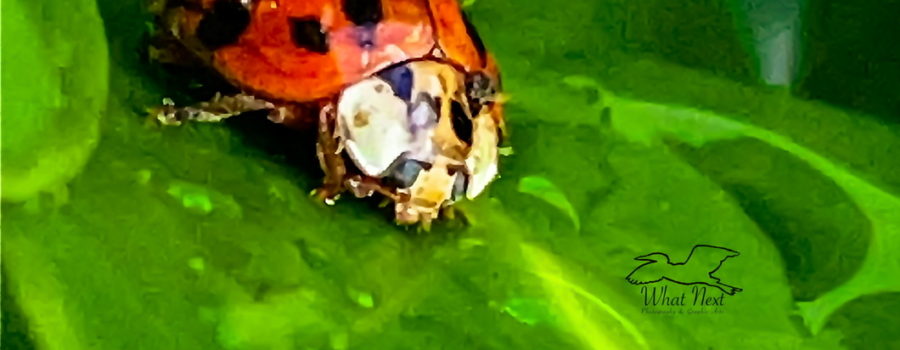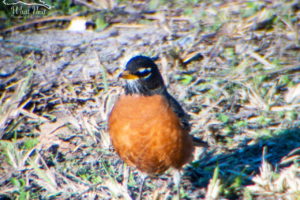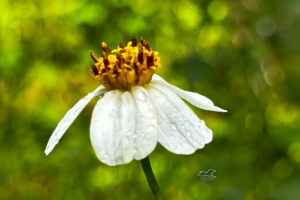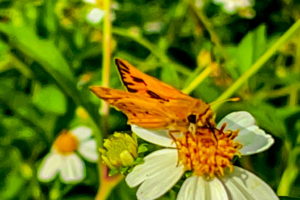The Asian Multicolored Ladybeetle is Another Good and Bad Story

Early one morning while walking one of my dogs, I started examining the hedges while she did her business and spotted a pretty little ladybug on one of the leaves. Despite the protests of the dog, who was finished with her business and ready to go back inside for a treat, I whipped out my camera for some photos. This seemed like an especially good one to photograph because it also had quite a few drops of morning dew clinging to it’s body. Although I easily recognized it as a ladybug or ladybird and I knew that there were multiple types of ladybugs, I didn’t know the half of it until I began researching it after taking these images. It turns out that this partcular ladybug was an Asian multicolored ladybeetle (Harmonia ayridis). They are also known as harlequins, multicolored Asians, and Asian ladybeetles, as well as Halloween beetles. Not surprisingly, this ladybeetle is native to eastern Asia and Japan, but it can now be found throughout much of the world including North America, South America, Europe, South Africa, and parts of the Middle East.

It was first brought to the United States in 1916, and reintroduced multiple times as a biological control agent for crop and garden pests, specifically aphids and scale bugs. It first established itself in the wild outside of New Orleans, Louisiana in 1988, and quickly spread across the US and Canada in the next few years. Both the European and South African populations were established from this eastern North Amercan stock. Particularly in Europe this ladybeetle is considered one of the most invasive insects in the world. There are several reasons for this. Probably the most important issue as far as people are concerned is that this beetle likes to form swarms inside buildings and attics to overwinter. The swarms themselves can definitely be disconcerting, but on top of that, Asian multicolored ladybeetles are capable of secreting a substance when distressed that has a foul odor and can cause stains. Some people may even be allergic to the substance and get nasal and ocular symptoms when exposed to it. These lady bugs also have voracious appetites and will out compete native species and sometimes even prey on them. Additionally, they host a certain parasite that they happen to be immune to, but that can infect and kill other species of ladybugs and some other insects.

So this sounds awful! Where’s the good part??? First, of course, this beautiful little beetle is a pretty addition to any garden. But beauty alone does not necessarily make something good does it!? Well, the Asian multicolored ladybeetle also has some other great qualities. They are actually really good at doing just what they were originally imported for; eating insects like aphids, mites, and scale bugs that damage plants. And that’s not just for gardens, either. For certain commercial crops, particularly soybeans, having this beetle around can lead to a 10-15% higher yield. Similarly, in commercial nurseries ladybeetles can significantly reduce plant damage and increase production in flowering plants and trees. These insects can also attract other forms of wildlife to your garden including insect-eating birds such as robins, cardinals, mockingbirds, and starlings. Raccoons, possums, and lizards, also will eat these ladybeetles. They are also eaten by larger insects such as wasps, spiders, assassin bugs, and ants. Finally, it should be noted that one of the substances that these beetles secrete, harmonine, has been found to be a very effective broad-spectrum antibiotic and is especially effective against the organism that causes tuberculosis.

Once again we see that importing a nonnative species can have mixed effects. Whether you are of the school that dislikes Asian multicolored ladybeetles or of the school that loves them, it appears that they are here to stay. I personally have no serious issues with them. Fortunately, my home has never been invaded by them, but even if that were to happen there are several effective ways to easily get rid of them and to keep them from coming back. If they will help to keep my plants healthier and feed my bird population then they are okay by me!





Recent Comments